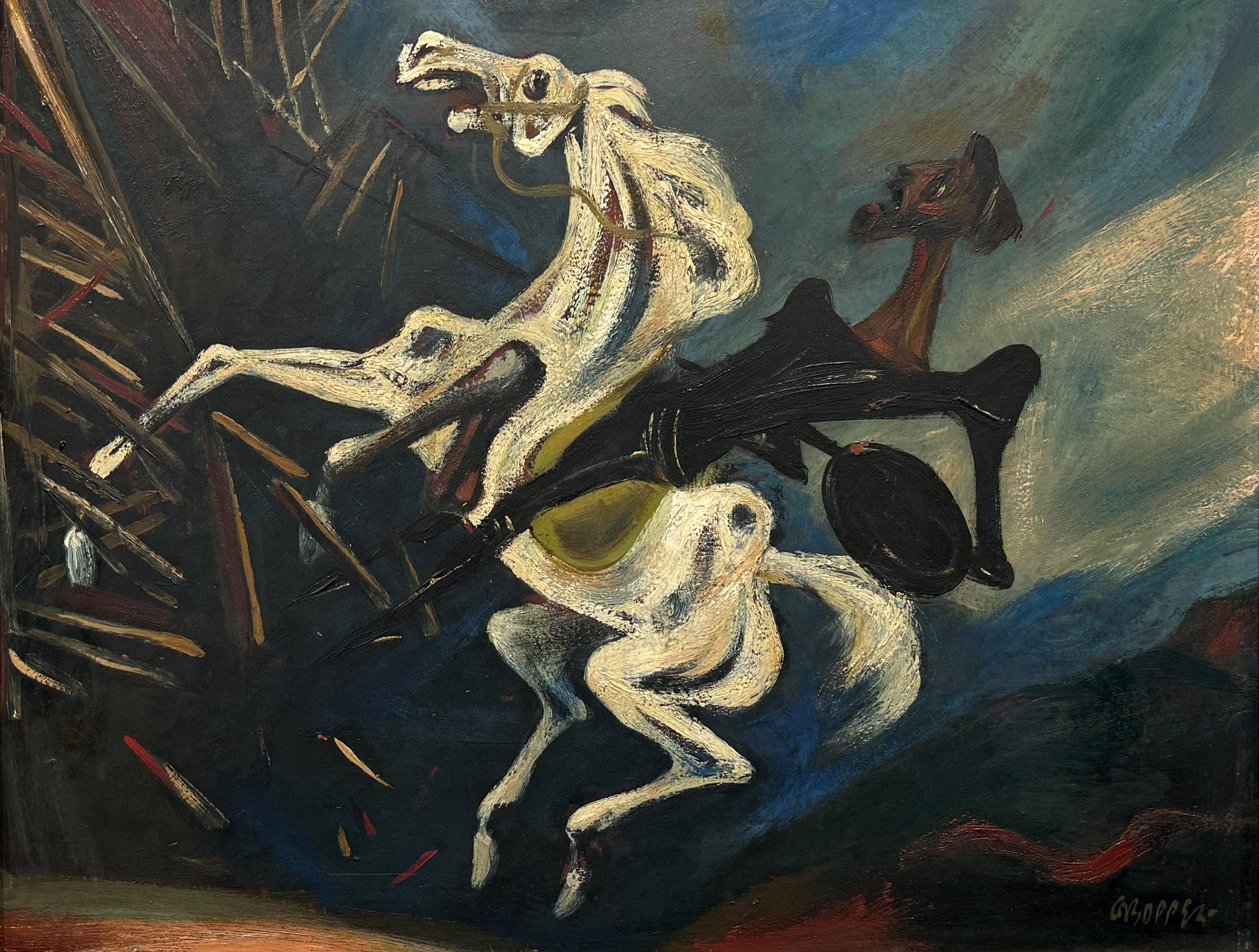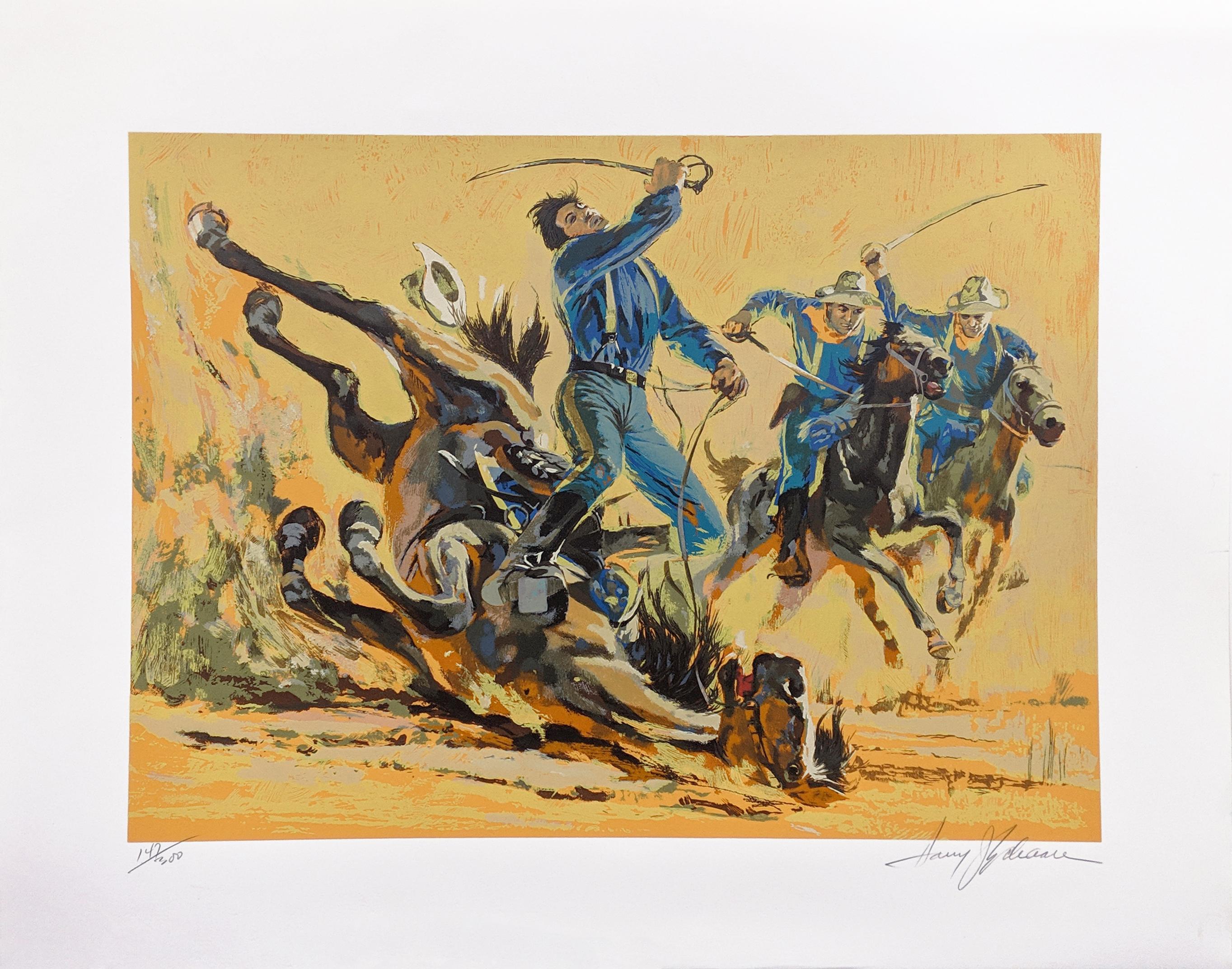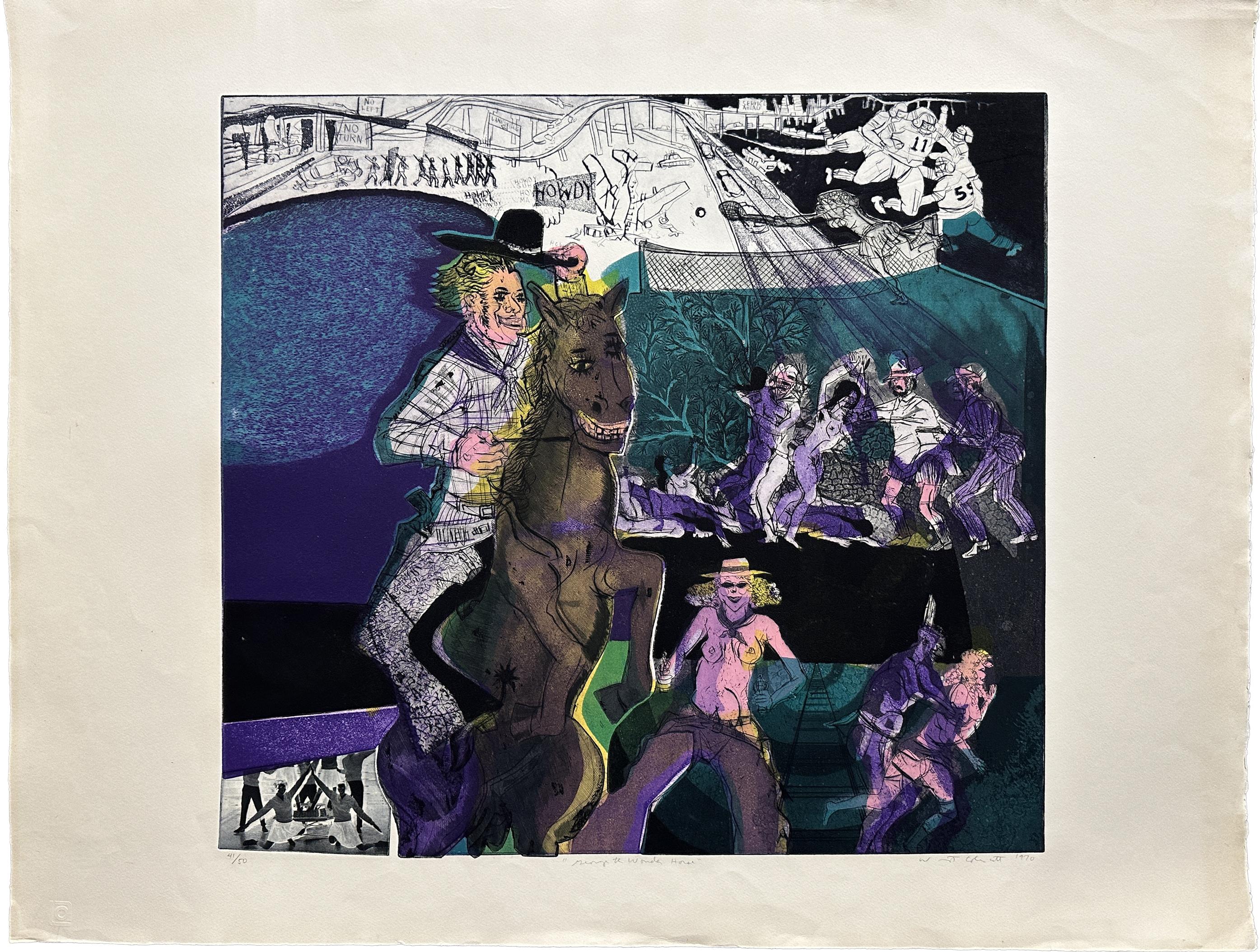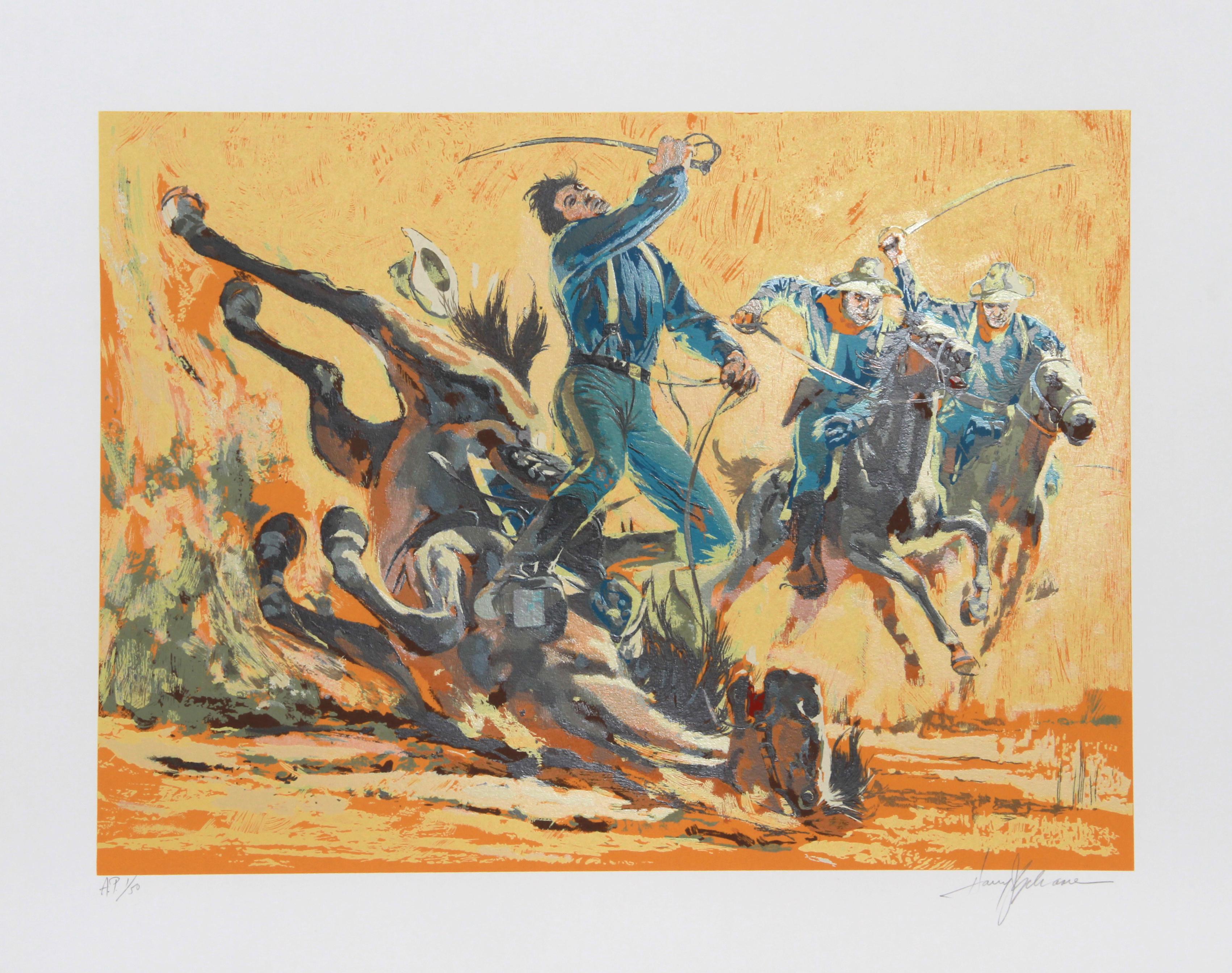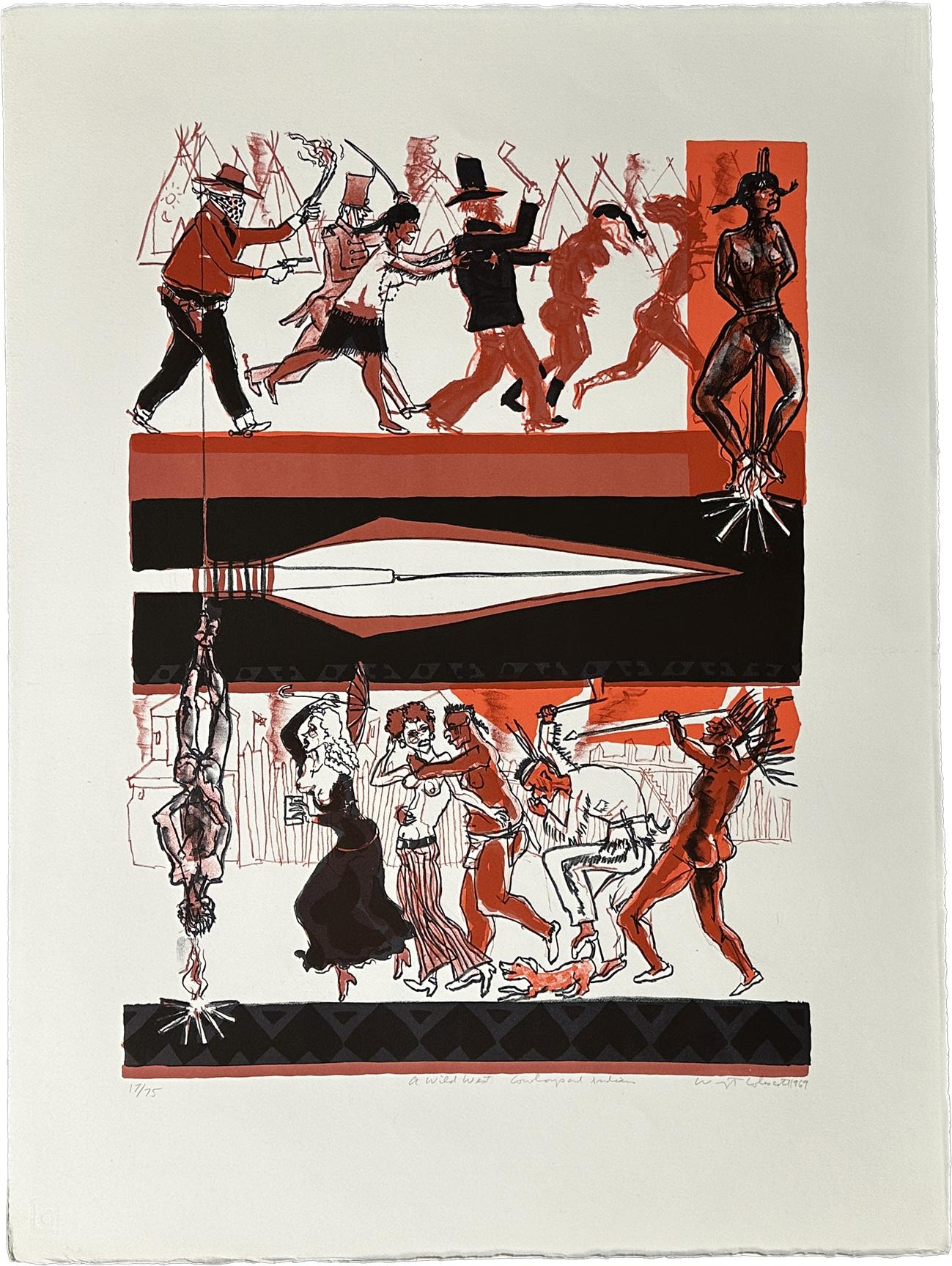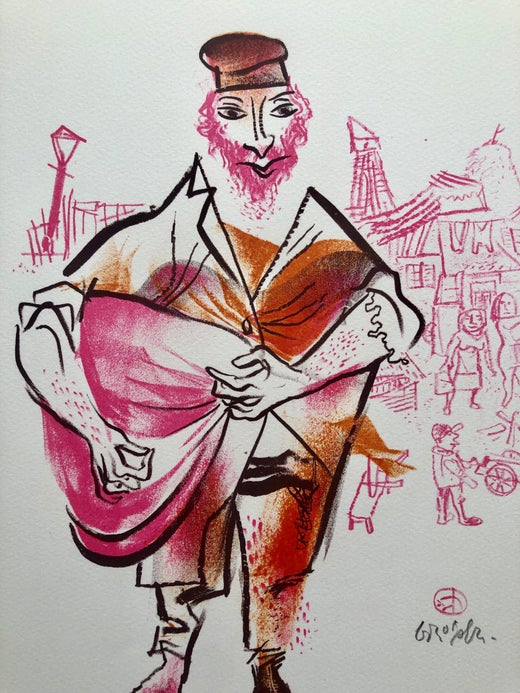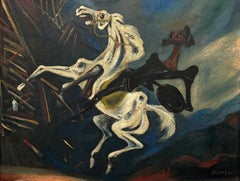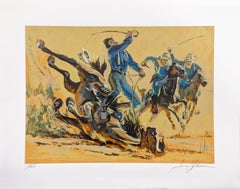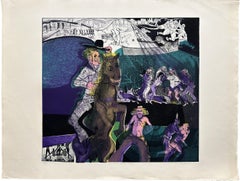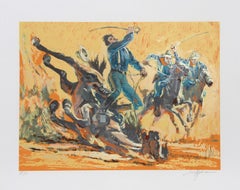This artwork titled "Ride Em Vaquero" c.1980 is an original color lithograph on wove paper by American artist Vic Herman, 1919-1999. It is hand signed and numbered 73/300 in pencil by the artist. The image size is 8.5 x 22 inches, sheet size is 21.5 x 28 inches. It is in excellent condition, has never been framed.
About the artist:
Vic Herman was born in Fall River, Massachusetts. When Herman was one-year-old his father, who played in the famous Paul Whiteman band, moved the family to Los Angeles where they settled in the Mexican district of the city where young Vic grew up. He attended classes, through junior high school, in all Mexican-American schools, learned to speak Spanish, and grew to love his Mexican-American neighbors and their culture. Says Herman, "If the many peoples of Mexico, when seeing my exhibitions, accept my paintings as authentic in telling the story of their daily lives, and if the peoples of the United States understand the dignity, culture and arts of the Mexican peoples, They refer to him affectionately as "Papa Victorio. Having chosen his subject, Herman next proceeds to capture his or her likeness with a careful pencil drawing-with or without the subject's knowledge. brought home in this manner. A remarkable feature of Herman's method is his interpretation of mixed media. For Herman this means combining any number of different media such as oil, watercolor, casein, acrylic, tempera, pencil, pastel or India ink; once he used as many as eight. In 1969, during the bicentennial celebration of the founding of San Diego, Herman was awarded a Medallion of Honor for his part in furthering good relations between Mexico and the United States. Recently, he has been proposed as a candidate for the Order of the Aztec Eagle, the highest honor Mexico can grant to a foreigner for promoting better cultural relations between Mexico and his country, Mexico SELECTED ONE-MAN EXHIBITIONS California Museum of Science and Industry, Los Angeles Lincoln Center Gallery of Fine Arts, New York United States Embassy Gallery, Mexico City Westchester County Art Center, New York David E. Field Gallery, New York Palace of Fine Arts, Mexico City Galeria of Contemporary Arts, Beverly Hills Spanish Monastery Gallery, Miami World's Fair Spanish Pavilion Gallery, St. Louis Chicago Press Club Gallery, 1973 & 1976 Civic Center Gallery, San Diego Mexican Consulate General Gallery, Phoenix Gimbels Department Store Gallery James Aldrich Gallery, Houston, Texas Thackery Gallery, San Diego Foreign Correspondent Gallery, Mexico City 1965 & 1967 La Jolla Art Association Gallery, La Jolla, California Municipal Gallery, Veracruz, Mexico Lawrence W. Hellman Gallery, Indianapolis, Indiana Galeria Misrachi, Mexico City San Diego Art Institute Gallery, San Diego Galeria Instituto de ARtes, Guadalajara, Jalisco, Mexico Bullocks Department Store Gallery, Sherman Oaks, California Municipal Gallery, Monterrey, Mexico Municipal Gallery, Zacatecas, Mexico Famous Baar Gallery, St. Louis United States Consulate General Gallery, Tijuana, Mexico May Company Department Store Galleries Art Students League, New York California Expo. Gallery, Del Mar, California Galeria Instituto Morelia, Michoacan, Mexico United States Information Service Gallery, Hermosillo, Sonora, Mexico University of Sonora Gallery, Hermosillo, Sonora, Mexico Mexican Consul General Gallery, Boston Mexican Consul General Gallery, Los Angeles Mexican Consul General Gallery, New York Theodore Greene Gallery, New Rochelle, New York Miami City Convention Center Gallery, Miami, Florida Cheremoya Arts Council Gallery, Hollywood, California Arizona State University Gallery, Tempe, Arizona Balboa Fine Arts Gallery, San Diego, California SELECTED IMPORTANT COLLECTIONS 'The Vic Herman Collection' '-Syracuse University, Syracuse, New York Franklin Delano Roosevelt Memorial Library, Hyde Park, New York General & Mrs. Omar Bradley-Beverly Hills, California The Estate of the late Rube Goldberg-New York City Senator & Mrs. George Murphy-Beverly Hills, California Mr. & Mrs. Fred Waring-Shawnee-on-Delaware, Pennsylvania Dr. & Mrs. Eugenio V. Pesqueira (Mexican Consul General-NYC) The Estate of the late Mayor of New York,
Fiorello LaGuardia...
